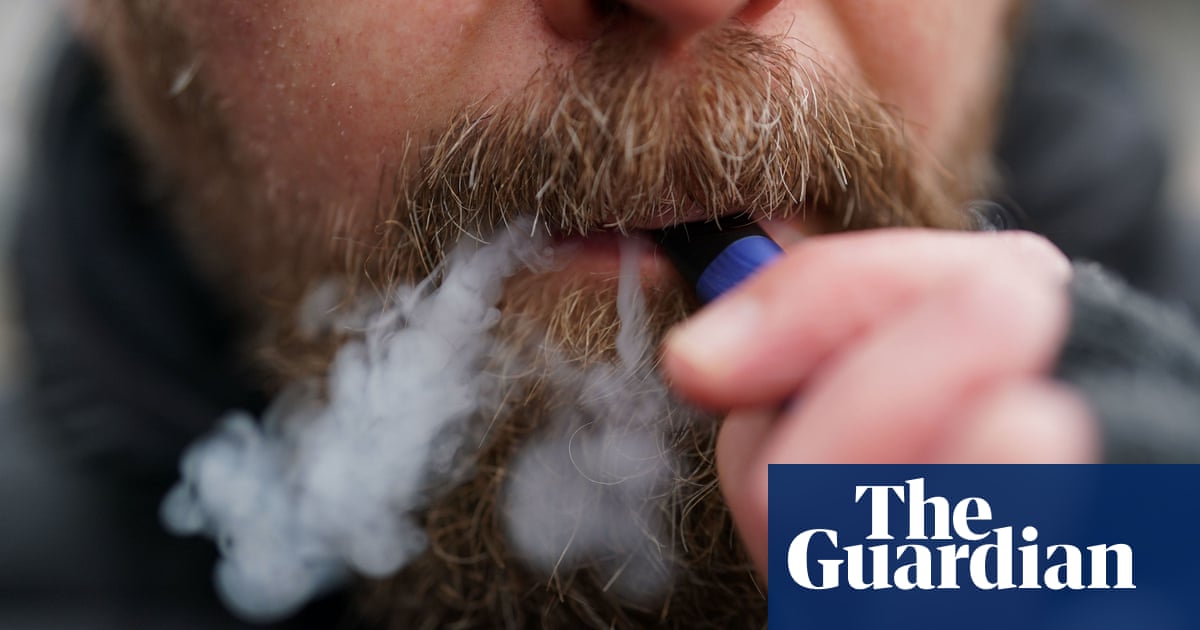
The use of high-strength nicotine vapes has increased sharply in the last three years, a study has found.
Researchers found that in June 2021, only 6.6% of people were using the highest-strength vapes, defined as those near the legal limit of 20mg/ml of nicotine, yet by January 2024 that had increased to 32.5% of users.
The study, by UCL researchers, looked at a survey of 7,314 adults who vape in England in order to assess how the use of vapes of different nicotine strengths had changed during that period.
The research, published in the journal Addiction and funded by Cancer Research UK, found the biggest increase among 18–24-year-old vapers, rising from 3.9% between July 2016 and June 2021 to 53.1% in 2024.
The researchers cautioned the government against taxing vape products according to nicotine strength, as suggested in the tobacco and vapes bill, despite the increase in the proportion of vapers using high-nicotine products.
Dr Sarah Jackson, the lead author of the study, based at the UCL Institute of Epidemiology and Health Care, said that current plans to tax high-nicotine vapes at a higher rate may make it less affordable to quit smoking.
She said: “Our study shows a sharp increase in the use of high-strength nicotine e-liquids in England since 2021.
“Nicotine may be addictive, but it is not what causes the great majority of harms from smoking. For smokers trying to quit, vaping with higher-strength nicotine is likely to be more effective, as it satisfies cravings more quickly and provides better relief from withdrawal symptoms.
“Taxing higher-strength nicotine products at higher rates will make the most effective way to quit less affordable, which may drive vapers towards lower-strength e-liquids and potentially undermine smoking cessation attempts. Of smokers who had quit within the last year and were vaping, we found that around 40% reported using those products which would attract the highest proposed tax rate.”
after newsletter promotion
Deborah Arnott, the chief executive of Action on Smoking and Health and co-author of the study, said: “Curbing underage vaping can best be achieved by making all vapes less appealing and increasing the price at point of sale, whatever their nicotine content.
“Those are the policies which will be most effective in stopping children from starting to vape in the first place. However, if we are to also ensure that vapes remain an effective quitting tool for adults, smokers should not be discouraged from using higher nicotine content vapes, which are likely to be more effective quitting aids.”
Source: theguardian.com


















